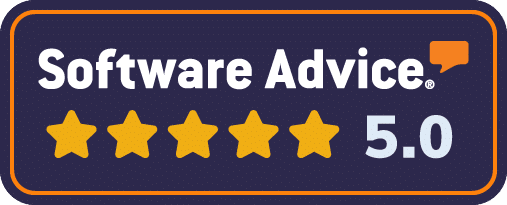Developing Leadership Competencies:
A Comprehensive Guide
Leadership is a crucial aspect of any organization. Effective leaders are essential for driving growth, managing teams, and achieving success. But what makes a great leader? It’s not just about having a title or position of authority. It’s about having the right leadership competencies.
In this comprehensive guide, we’ll explore what leadership competencies are, why they are important, and how you can develop them to become a successful leader.
What Are Leadership Competencies?
Leadership competencies are the skills, behaviors, and knowledge that are necessary for effective leadership. They are the qualities that enable leaders to guide, motivate, and inspire their teams to achieve goals and drive success.
These competencies can be divided into three categories: technical, interpersonal, and conceptual. Technical competencies refer to the specific skills and knowledge required for a particular job or industry. Interpersonal competencies are the abilities to interact and communicate effectively with others. Conceptual competencies involve strategic thinking, problem-solving, and decision-making.
Why Are Leadership Competencies Important?
Leadership competencies are crucial for the success of any organization. Here are some reasons why they are important:
- Effective leaders can inspire and motivate their teams to achieve goals and drive success.
- Leaders with strong competencies can make strategic decisions and solve complex problems.
- They can effectively manage and develop their teams, leading to higher employee engagement and retention.
- Leaders with strong competencies can adapt to changing environments and lead their teams through challenges.
- They can build strong relationships with stakeholders and drive collaboration within the organization.
In short, leadership competencies are essential for creating a positive and productive work environment and driving the success of an organization.
How Can You Develop Leadership Competencies?
Developing leadership competencies takes time and effort, but it is a worthwhile investment. Here are some steps you can take to develop your leadership competencies and become a successful leader.
Identify Your Strengths and Weaknesses
The first step in developing leadership competencies is to identify your strengths and weaknesses. This self-awareness will help you understand where you excel and where you need to improve. You can use tools like self-assessments, 360-degree feedback, and personality tests to gain a better understanding of your strengths and weaknesses.
Set Goals and Create a Development Plan
Once you have identified your strengths and weaknesses, you can set goals and create a development plan. Your goals should be specific, measurable, achievable, relevant, and time-bound (SMART). For example, if you want to improve your communication skills, your goal could be to attend a public speaking course within the next six months.
Your development plan should outline the steps you will take to achieve your goals. This could include attending training programs, seeking mentorship, or practicing specific skills in your daily work.
Seek Mentorship and Feedback
Mentorship is a valuable tool for developing leadership competencies. A mentor can provide guidance, support, and feedback as you work towards your goals. They can also share their own experiences and insights, helping you gain a better understanding of leadership.
In addition to mentorship, it’s essential to seek feedback from your colleagues, team members, and superiors. This feedback can help you identify areas for improvement and track your progress.
Attend Training Programs and Workshops
Attending training programs and workshops is an excellent way to develop leadership competencies. These programs can provide you with new knowledge, skills, and perspectives that can help you become a more effective leader. Look for programs that focus on specific competencies you want to develop, such as communication, strategic thinking, or team management.
Practice, Practice, Practice
Developing leadership competencies takes practice. As you work towards your goals, make an effort to practice the skills you want to develop in your daily work. For example, if you want to improve your communication skills, make an effort to communicate clearly and effectively in all your interactions.
Embrace Challenges and Seek New Opportunities
Challenges and new opportunities are excellent opportunities for growth and development. Embrace challenges and seek out new opportunities that will allow you to practice and develop your leadership competencies. This could include taking on new projects, leading a team, or volunteering for leadership roles in your community.
Real-World Examples
Let’s take a look at some real-world examples of leadership competencies in action.
Communication
Effective communication is a crucial leadership competency. Leaders who excel in this competency can clearly articulate their vision, provide feedback, and build strong relationships with their team members.
For example, Indra Nooyi, the former CEO of PepsiCo, is known for her exceptional communication skills. She was able to communicate her vision for the company and inspire her team to achieve it, leading to significant growth and success for PepsiCo.
Strategic Thinking
Strategic thinking is another essential leadership competency. Leaders who excel in this competency can analyze complex situations, identify opportunities, and make strategic decisions that drive success.
For example, Jeff Bezos, the founder and CEO of Amazon, is known for his strategic thinking skills. He was able to identify the potential of e-commerce and build Amazon into one of the most successful companies in the world.
Team Management
Leaders who excel in team management can effectively manage and develop their teams, leading to higher employee engagement and retention. They can also build a positive and productive work environment.
For example, Mary Barra, the CEO of General Motors, is known for her exceptional team management skills. She has implemented various initiatives to improve employee engagement and has created a culture of collaboration and innovation at General Motors.
Who Is Responsible for Developing Leadership Competencies?
Developing leadership competencies is a joint effort between the individual and the organization. While individuals are responsible for identifying their strengths and weaknesses and setting goals, organizations can provide support and resources to help individuals develop their competencies.
Organizations can offer training programs, mentorship opportunities, and feedback mechanisms to help individuals develop their leadership competencies. They can also create a culture that values and encourages continuous learning and development.
Conclusion
Leadership competencies are essential for the success of any organization. By identifying your strengths and weaknesses, setting goals, seeking mentorship and feedback, attending training programs, and embracing challenges, you can develop your leadership competencies and become a successful leader. Remember, developing leadership competencies is an ongoing process, and it takes time and effort, but the results are worth it.


